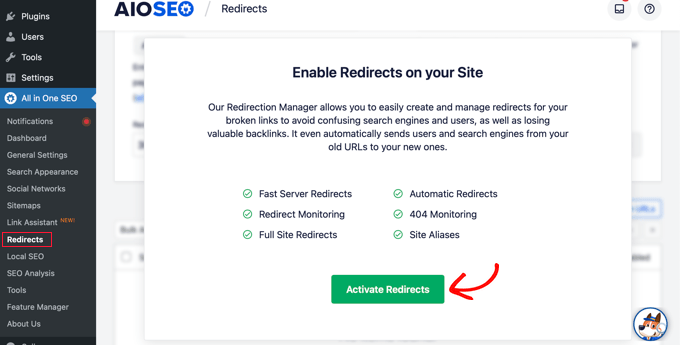31 Aug, 2023 | Web Development Company
The Beginners Guide to Creating 301 Redirects in WordPress

1. What is a 301 Redirect?
Defining the 301 Code:
The label "301 redirect" or "http 301" signifies the digital freeway's code for directing online traffic from one URL to another. In layman's terms, it's like informing your website's visitors and search engines that a particular page has moved to a new location. Hence, they are automatically guided to this new location.Why 301 and not another code?
While there's a spectrum of "http redirect codes" to navigate, the "code 301" or "301 code" stands as the definitive beacon for an enduring URL transition. This is vital for maintaining search engine ranking and ensuring a seamless user experience.2. Why are 301 Redirects Essential?
SEO (Search Engine Optimisation) Benefits:
"301 redirect seo" is a popular term because using a 301 redirect ensures search engines know where to find moved content. It transfers most of the original page's link equity to the new one, safeguarding your ranking.User Experience:
Redirects ensure that users don't land on broken links or '404 not found' pages. Instead, they are led smoothly to the right destination.Website Evolution:
As websites grow and evolve, structural changes can necessitate URL shifts. Redirects manage these transitions efficiently.3. How to Implement a 301 Redirect in WordPress
Using WordPress Plugins:
 The easiest method for "wordpress redirect" is by using plugins. The "wordpress redirection plugin" alongside the "redirection plugin" emerge as the twin titans for seamless site navigations.
The easiest method for "wordpress redirect" is by using plugins. The "wordpress redirection plugin" alongside the "redirection plugin" emerge as the twin titans for seamless site navigations.
- WordPress Redirection Plugin: Install and activate the plugin. Navigate to "Tools" > "Redirection" to set up your redirects.
- WP Redirect Plugin: After activation, head to the "wp redirect" settings page. Add your source URL and target URL, then save.
Manual Redirection with .htaccess:
For those comfortable with editing their website's core files, the "htaccess 301 redirect" or "301 redirect htaccess" method is an option. By accessing your site’s .htaccess file, you can add lines of code to indicate your redirections.4. Checking Your Redirects
Once set up, using a "301 checker" is vital to ensure all redirects are functioning correctly. Tools like these ensure that all "url redirects" and "website redirects" send users to the correct destination.5. Potential Pitfalls and Solutions
Redirect Loops:
If your "website redirect" or "url redirection" inadvertently sends users back to the original page, you've created a loop. Double-check your entries to solve this.Impact on Page Speed:
Too many redirects can slow down your website. Always ensure you're only using necessary redirects.6. Other Types of Redirects
While "301 redirects" signify permanent moves, there are other "redirect types" worth noting:- HTTP Redirect Codes: These are codes like 302 (temporary redirect) or 307 (temporary redirect for HTTP/1.1). Understanding "http redirect codes" can aid in using the right redirect for the right situation.
- HTML Redirect: This "redirect in html" or "html redirect" uses a meta tag to guide visitors to a new page after a set time.
- PHP Redirect: The "php redirect to another page" command in PHP can send users from one page to another.
7. Beyond Basic Redirection
- Redirection HTML: This involves using HTML code to automatically move users from one webpage to another.
- Post Redirect Cost: If you're considering a "redirect business post," it's essential to factor in potential costs, such as lost SEO ranking or user trust.
- Find All Redirects to a Site: Tools are available that allow users to see all active redirects pointing to their website.
8. Advanced Redirect Techniques
Scroll of Redirection:
Though it might sound magical, "scroll of redirection" is a term sometimes used in coding circles. It's about creating smooth scrolls to different parts of a page post-redirection.Synonym Redirect:
Understanding "synonym redirect" is key for those targeting multiple keywords. It involves setting up redirects from URLs with synonyms of your primary keyword, ensuring maximum reach.Business Page Redirection:
"Redirect business post" refers to redirecting business pages. This might be necessary after rebranding or shifting your business domain.9. The Science Behind Redirects
How Do Redirects Work?
Ever wondered, "how do redirects work?" At the heart of web browsing, when a digital query hits a specific URL, the server whispers back with the "http redirect code". If it's a "301 code", the server tells the browser that the page has permanently moved and provides the new location.Differentiating 301 from Others:
While "301 redirection" denotes a permanent move, codes like 302 suggest a temporary shift. The distinction ensures search engines treat each URL appropriately.10. Common Misconceptions
Redirection and SEO:
Many worry about the SEO impacts of redirects. While unnecessary redirection can harm SEO, the proper use of "301 redirect seo" techniques retains, and sometimes even boosts, your ranking.URL Redirection and User Experience:
If done right, "url redirects" or "website redirects" don’t hinder user experience. Instead, they enhance it by preventing access to broken or outdated links.11. Troubleshooting Common Redirect Issues
Detecting Bad Redirects:
To "find all redirects to a site" or diagnose bad ones, tools like online redirect trackers or the "301 checker" can be invaluable.Post Redirection:
"How do I redirect my post?" is a common query. WordPress makes this straightforward with in-built features and plugins like the "wordpress redirection plugin". You can take help from: Top Class WordPress Development Agency London12. Securing Your Redirects
Remember, while setting up "wordpress redirects", security should be a top concern. Ensure all "wp redirect page" setups don’t lead to malicious or spammy websites.13. The Role of Plugins in Redirection
WordPress Redirect Plugins:
While manual redirection is an option, plugins like the "wordpress redirect plugin" or "redirection plugin" offer a user-friendly interface.- Benefits: Easy to use, even for beginners. They often include tracking features, allowing you to see the number of hits on each redirect.
- Choosing the Right One: Look for a plugin with good reviews, regular updates, and compatibility with the latest WordPress version.
14. Migrating a Website and Redirects
When moving an entire website, "wordpress redirects" become vital. It ensures that the SEO juice from the old site gets passed on to the new one.Steps to Consider:
- Mapping Out URLs: Before making the move, create a map of old URLs and their corresponding new ones.
- Implementing Redirects: Use the "wordpress redirect to page" feature to direct old URLs to the new ones.
- Testing: Once migrated, use tools like the "301 checker" to ensure all redirects work as they should.
15. The Technicalities: Differentiating Between Different Redirects
Apart from the standard "301 redirect", understanding other types, like the "http redirect codes", helps in making informed decisions:- 302 Redirect: Temporary redirect. Tells search engines that the move is only for a short time.
- 307 Redirect: Another form of temporary redirect, but strictly HTTP/1.1 compliant.
16. Redirect Chains: The Domino Effect
Sometimes, a redirect might lead to another redirect, creating a chain. This isn’t ideal for several reasons:- SEO Impact: Multiple hops can dilute the "link juice" passed from the original page.
- User Experience: The more redirects in a chain, the longer a page takes to load.
17. The Importance of Cleanup
Regularly review your "wordpress redirections". Over time, some might become obsolete. Cleaning them up ensures optimal website performance and keeps the backend organized.18. The Global Implications of Redirects
When considering global audiences, think about geolocation redirects. This automatically directs users to a version of your website tailored to their region or language. Note: Ensure users can switch to a different version if they wish. Forced redirects based on geolocation can be frustrating for those who want to view the global version of your site.19. The Future of Redirects
As the digital landscape evolves, the techniques and methods we use may change. However, the core principle behind redirects – ensuring a seamless user experience and guiding users correctly – will always remain. Creating redirects in WordPress ensures smooth navigation for your users. Complement this with a well-designed IT consultancy theme coming soon page to build anticipation.Final Words
Redirection, particularly in the WordPress ecosystem, can seem daunting. But with a clear understanding and the right tools, it becomes a straightforward process. From understanding the "redirect html" basics to diving deep into "301 redirect htaccess", this guide aims to be your companion in mastering this essential digital tool. Embrace redirection not as a challenge, but as an opportunity to enhance user experience, streamline site structure, and boost your SEO efforts.Frequently Asked Questions
A 301 redirect is a permanent URL redirection, signaling that a page's location has changed permanently.
They ensure search engines recognize content movement, transferring most of the original page's link equity to the new location, preserving your ranking.
Yes, you can manually set up 301 redirects using the .htaccess file, but plugins offer a more user-friendly approach, especially for beginners.
Yes, there are other HTTP status codes, like 302 and 307, which signify temporary redirects.
Using tools like the "301 checker" can help ensure that all redirects lead users to the correct destination.
Common problems include redirect loops, negative SEO impact from too many chained redirects, and slower website performance.
It's when a redirect leads to another redirect, creating a sequence of hops before reaching the final destination.
It's advisable to regularly review and update your redirects, ensuring optimal website performance and removing obsolete ones.
No, while plugins provide an easier method, manual methods using .htaccess or coding can also be employed.
While a 301 denotes a permanent move, a 302 indicates a temporary change in URL location.

